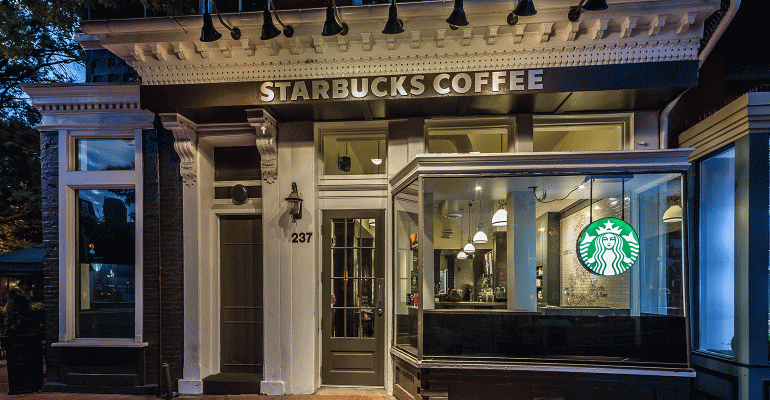Starbucks Corp. has had some impressive success evolving into a digitally enhanced coffee chain.
But maybe it was too successful. Now the company is blaming mobile order and pay for slow service last quarter.
Use of Starbucks’ mobile order and pay skyrocketed in the first quarter ended Jan. 1. At a time when many restaurant chains are just testing the digital waters, 7 percent of Starbucks’ U.S. consumers used mobile ordering and payment — up from 3 percent a year ago. And 27 percent of transactions at company-operated locations involved mobile payment.
Starbucks is outperforming, “by significant margins anyone of scale in the restaurant and retail industry, engaging more deeply, frequently and expanding our base of customers more effectively and reliably,” CEO Howard Schultz said on the company’s earnings call Thursday.
The problem is this: So many people used mobile order and pay in many locations that it had the opposite effect that the chain intended. Rather than speed orders and improve service, mobile ordering actually drove some customers away by crowding the counter where people get their drinks.
So, while same-store sales increased 3 percent in the U.S. in the period, including 5 percent higher average check, transactions fell 2 percent. The 3-percent number was Starbucks’ lowest same-store sales number since the financial crisis, according to Buckingham Research analyst John Zolidis.
“A growing number of stores are challenged to keep up with volume demands,” Schultz said. “We are now laser focused on fixing the problem. The nature of it is too much demand. Operational challenge is a problem we have solved before. I assure you we can solve it again.”
Kevin Johnson, tapped to succeed Schultz as CEO later this year, noted on the earnings call that 1,200 locations now get 20 percent or more of their orders through mobile order and payment. By comparison, only 13 locations were at that level a year ago.
The skyrocketing use led to “significant congestion at the handoff,” he said.
“When those orders come in at that volume, it’s creating congestion at handoff,” Johnson said. “If the line looked too long, customers decided not to do the transaction.”
Johnson noted that Starbucks has had this problem before, when its soaring popularity led to long lines at the point-of-sale line. Now those problems are developing at the drink handoff line.
“I think that’s the most significant, contributing factor to our 3-percent” same-store sales number, Johnson said.
Per Schultz’s vow, executives on the call said they are working on plans to deal with the problem. Some locations are already working on solutions on their own, and the company is analyzing those solutions to see what works, and what could be expanded chainwide.
Starbucks is also testing new digital enhancements, such as text message notifications that let customers know when their drinks are ready.
Still, Starbucks executives said the company’s digital strategy is giving it a leg up in an evolving market. Schultz has been warning of the digital encroachment on retail traffic for years, and says Starbucks’ digital strategy has helped protect it from that issue.
This week, Starbucks touted numerous figures in the first quarter that many other restaurants and retailers could only dream of: 40 percent of transactions in the U.S. came through the Starbucks Card. Consumers loaded $2.1 billion onto their cards. And there’s $1.5 billion on those cards that customers haven’t used yet, all but guaranteeing future revenue. There are now 12.9 million members in Starbucks Rewards loyalty program.
“We are going to be one of the true winners, regardless of what happens from those retailers suffering from a downturn of traffic,” Schultz said.
Investors were not totally buying into the idea. Starbucks’ stock fell more than 4 percent in Friday morning trading. And analysts were decidedly mixed on the company’s explanations for its traffic problem.
Bernstein Research analyst Sara Senatore said difficult comparisons helped fuel the weak same-store sales number.
“We see evidence that digital initiatives have increased the difficulty of forecasting, but we have confidence [Starbucks] can address this,” she wrote in a note Friday.
But Zolidis was skeptical, saying, “it’s also undeniable that the business is slowing.”
“We struggle with this explanation,” Zolidis said of the idea that mobile order and pay is hurting traffic. “Our view is that traffic across the industry was terrible and [Starbucks] was simply not immune.”
He also wondered whether Starbucks’ prices had grown too much for some customers.
“The divergence in traffic and ticket leads us to speculate whether the price-value offer is getting lost in the quest for ever-increasing premiumization,” he said.
Contact Jonathan Maze at [email protected]
Follow him on Twitter: @jonathanmaze

